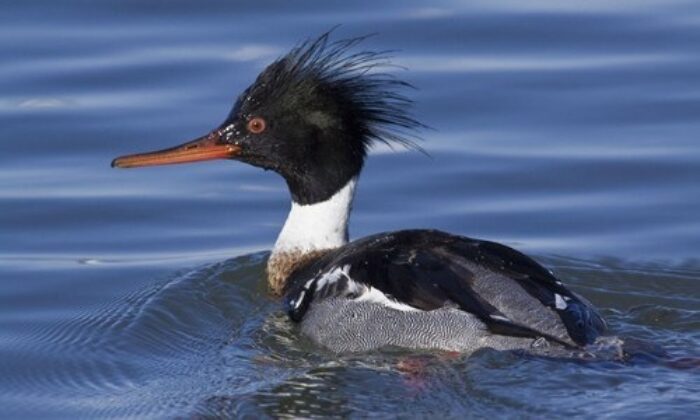Red-breasted Merganser
Mergus serrator
The red-breasted merganser is a diving duck with a long, serrated bill and a shaggy crest on the back of the head. It lives along the shores of the Chesapeake Bay and its tidal creeks and rivers from autumn through spring.

